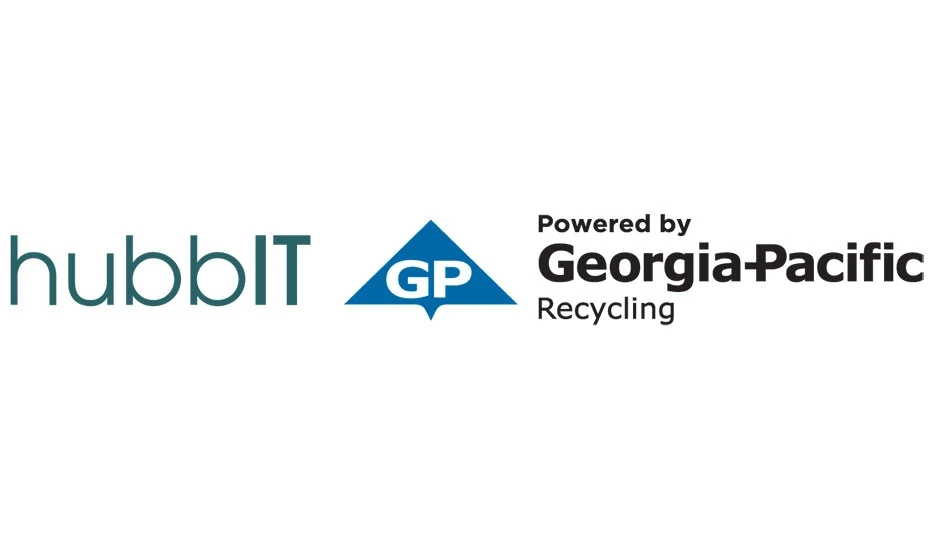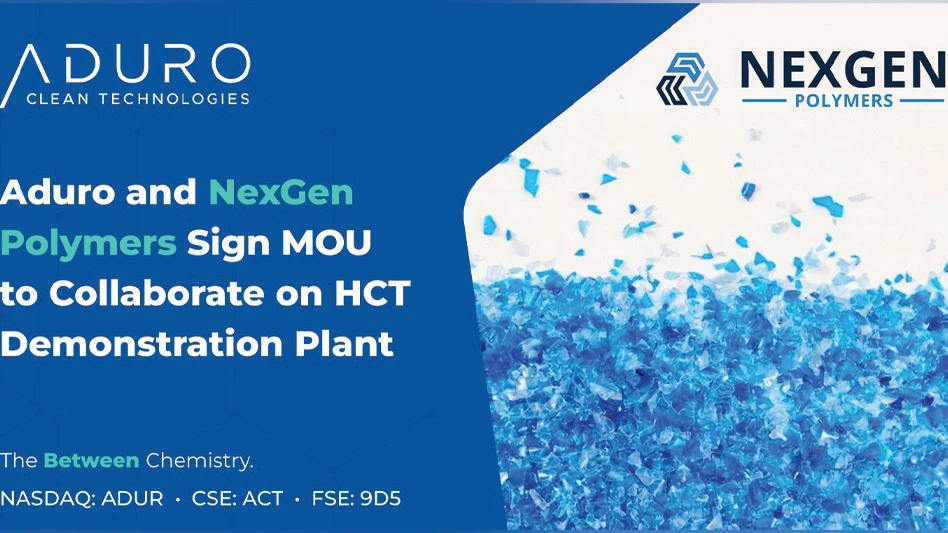In the early years of recycling in Canada, industry groups and private contractors were responsible for reclaiming recyclable products and operating blue box programs. In the mid-1990s, though, provincial governments, unhappy with the private sector results, stepped in and took charge of most recycling efforts across the country. Now, it seems, the pendulum is starting to swing back.
Taking the lead in once again privatizing recycling is the west-central province of Manitoba. Manitoba’s government has cited program costs as the reason it is backing away from operating provincially funded recycling programs. As part of the process of turning recycling back to industry groups, the provincial government has created Green Manitoba, an arm’s-length, special operating agency whose purpose is to push industry to once again take charge of recycling as well as to expand the range of end-of-life products to be recycled to include electronics.
A PRODUCER-RESPONSIBILITY APPROACH. "We are proceeding with a producer-responsibility approach to recycling in Manitoba," says Green Manitoba Director Doug Smith. "We are going to be obligating industry to fund and run programs to look after end-of-life materials."
Smith says industry groups will be responsible for tires, electronics, portions of the curbside blue-box program, which will be expanded to include hazardous household wastes such as paint and other materials. "Individual working groups will be developed for each stream to initiate program proposals to be forwarded to Green Manitoba," he says. "We will review the plans and determine whether or not to approve them."
Smith says that Green Manitoba has an ambitious time line. All four industry groups are expected to have recycling programs approved and in operation within 18 months.
"Canada’s publicly led recycling programs are not financially sustainable," Smith says. He says that he attended a provincial product responsibility conference in Calgary in mid-March and found most other provinces were interested in what Green Manitoba was doing.
"I was also at a recycling conference in Europe recently and heard the same concerns," Smith says. "Many European countries are also moving in this direction."
GOING ELECTRONIC. Where electronics recycling is concerned, the western prairie province of Alberta thus far has Canada’s first such program, which was launched in October of 2004.
"We have established over 100 collection sites—some of them near landfills—throughout the province (which has a population of about 3 million) for electronic waste," says Kari Veno, communications manager for the non-profit Alberta Recycling Management Authority (ARMA), which administers the program.
"We have five qualified recyclers driving around picking up the used computer equipment, televisions and other materials and separating them into their glass, metal and plastic components," she says.
| Toshiba Offers Electronics Recycling Program |
|
Toshiba of Canada Information Systems Group, based in Markham, Ontario, has launched its Toshiba Environmental Recycling and Recovery Effort (TERRE), a PC disposal program. In a press release, Toshiba says it "will ensure that PC hardware and any associated components that pose environmental risks will be dismantled and safely disposed of, regardless of the manufacturer." Starting March 23, Canadian residents with unwanted notebook computers, handheld computers or LCD computer monitors can register at www.toshiba.ca/TERRE. Toshiba will send a courier to retrieve the hardware for disposal for free. Participants will get a USB flash drive as an incentive. "This program carries an internal cost, but protecting our environment is a priority investment," Todd Smith, Toshiba of Canada Information System Group’s director of product marketing, says. |
To pay for collection, transportation and recycling of end-of-life electronics, the provincial government instituted a new environmental fee beginning Feb. 1, 2005, on the purchase price of all new electronics products sold in the province. Veno reports that the fee for laptop computers, electronic notebooks and desktop printers is $5; CPUs carry a fee of $10; desktop computer monitors, $12; 19-inch to 29-inch televisions, $25; 30-inch to 45-inch televisions, $35; and televisions with screens larger than 45 inches carry a fee of $45.
According to information available on ARMA’s Web site, the program has recovered more than 35,000 televisions, 76,000 monitors, 75,500 computers and 40,000 printers within Alberta in the first 18 months.
Veno reports that the public and media response to the new program has generally been positive. She says that Saskatchewan (the province between Alberta and Manitoba) will soon have a similar obsolete electronics recovery program in operation, with British Columbia—Canada’s Pacific Coast province—and the smaller East Coast province of Nova Scotia following suit.
RESIDENTIAL COLLECTION. In Ontario, Manitoba’s eastern neighbor and Canada’s largest province, the major recycling news this year is the grand opening in mid-March of the largest integrated recycling plant in Canada in the Peel region, which covers the western part of the Greater Toronto area. The new facility has a processing capacity of 130,000 metric tons per year. It also includes a transfer station that can handle 100,000 metric tons per year. A compost section that will be capable of handling 60,000 metric tons of compost is expected to be open in May or June.
"We will be launching a kitchen organic collection program in the spring of 2007," says Dave Gordon, director of planning for the Peel region.
Waste Management of Canada Corp. designed and built the new facility and also has a five-year operating contract.
Sarah Mills, communications director for the Recycling Council of Ontario, says that Ontario’s two-year-old province-wide blue-box program continues to be controversial. "The program costs considerably more than the original cost estimates, and the cost is higher still this year," she says. "The brand owners are quite distressed."
Waste Diversion Ontario (WDO)—a partnership among industry, municipalities, the province and non-governmental organizations that was established in June 2002 through the previous provincial government’s new Waste Diversion Act—runs the program. WDO is charged with developing, funding and implementing waste diversion programs for materials designated by the Minister of the Environment. Its first mission was to develop a sustainable funding plan for the blue-box program by obligating brand owners whose packaging ends up in the blue box to pay for half of the operating costs for collection and processing to municipalities.
In addition to the WDO, the government of Ontario has established Stewardship Ontario, which has the authority to set and to collect fees from industries whose materials, such as glass, metal, paper and plastics, are collected in the blue-box program. The provincial Environment Ministry is also supposed to be developing used tire, oil and electronics recycling programs, Mills notes, but there have been no announcements as to when these additional programs will begin.
METAL MARKETS. Canadian metals recyclers are waiting to see what changes, if any, Canada’s new Conservative government will be introducing that might effect the industry. "We have been trying for years to get the government to accept the fundamental fact that the recycling industry is not just about waste," says Len Shaw, executive director of CARI (Canadian Association of Recycling Industries). "It should be encouraged as a sustainable development industry."
One measure of that recognition would be tax changes that would put the recycling industries on the same playing field with primary metal industries, Shaw says. "We complement and compete with primary resource industries," notes. "We should have the same tax advantages, such as being able to write off certain equipment."
Shaw reports that the industry continues to prosper. The price for copper, for example, is so high, he notes, that there have been incidences of some metals shipments being stolen.
The most recent data, provided by Rob Sinclair of National Resources Canada Recycling Minerals and Metals Section’s International and Domestic Market Policies Group, shows that export shipments were significantly higher in 2005 than in 2004. Exports of ferrous scrap were valued at CDN $1 billion in 2005, significantly more than the value of what was shipped in 2004, while the dollar value for nonferrous metal scrap was $1.5 billion in 2005 compared to $1.2 billion in 2004.
Canada imported $307 million worth of ferrous scrap and $1.2 billion worth of nonferrous scrap in 2005 compared with figures of $302 million and $1.3 billion the previous year.
"As the economy and the Canadian steel industry goes, so do we," says, Phil Kelly, the president of Poscor, a dominate player in the industry.
Poscor, which is based in Hamilton, Ontario, employs about 200 people and moves 100,000 metric tons of scrap metal per month. Last year, the company acquired two smaller related companies, North Bay Salvage in North Bay and Traders Metal in Sault Ste. Marie. Both communities are in northwestern Ontario.
"We are always on the lookout for new opportunities," Kelly says.
Michel Poulin, vice-president of Quebec Metals Recycling, a division of Quebec SNF, says that his company installed a new 8,000-hp Metso Lindeman shredder last year that has more than doubled the plant’s production capacity.
Brian McIver, vice president of Quebec-based Nova Pb, Canada’s leading lead recycler, says that his company was recognized with a Phoenix Environmental Award last year by the province of Quebec in the research and development category for the development of its CALSiFrit technology.
Nova spent more than U.S. $7 million developing the new technology, which processes spent pot liners (SPL) generated by the primary aluminum industry and converts the hazardous material into a commercial product that is used in the cement industry. The cement additive improves the durability and other properties of concrete.
Nova Pb began commercially recycling spent pot liners in January 2003. In January 2005 Nova concluded a three-year agreement with Alcoa Canada to recycle spent aluminum pot liners and other materials generated by Alcoa’s 22 Quebec smelters. The current installation is capable of recycling approximately 35,000 metric tons of spent aluminum pot liners per year.
On the West Coast, David Yocholwitz, general manager for Vancouver-based ABC Recycling, says British Columbia’s economy is booming thanks in part to preparation for the coming Winter Olympic Games in 2010. Metal prices are extremely high, he says.
Canada’s paper and corrugated material recyclers are suffering from rising energy costs, which have forced several plants in northwestern Ontario and elsewhere to close in recent months.
Part of the problem is that many of the plants were built originally for political reasons, says John Mullinder, executive director of the Paper and Pulpboard Environmental Council.
"The closest paper recycling mill to the city of Regina (in Saskatchewan) is 400 miles away," Mullinder says. "While corrugated volumes are going up, there is not enough corrugated material in Canada for the mills that are here."
The author is a freelance writer based in Winnipeg, Manitoba, Canada. He can be reached at myron@autobahn.mb.ca.
Get curated news on YOUR industry.
Enter your email to receive our newsletters.

Explore the May 2006 Issue
Check out more from this issue and find your next story to read.
Latest from Recycling Today
- ReMA opposes European efforts seeking export restrictions for recyclables
- Fresh Perspective: Raj Bagaria
- Saica announces plans for second US site
- Update: Novelis produces first aluminum coil made fully from recycled end-of-life automotive scrap
- Aimplas doubles online course offerings
- Radius to be acquired by Toyota subsidiary
- Algoma EAF to start in April
- Erema sees strong demand for high-volume PET systems






